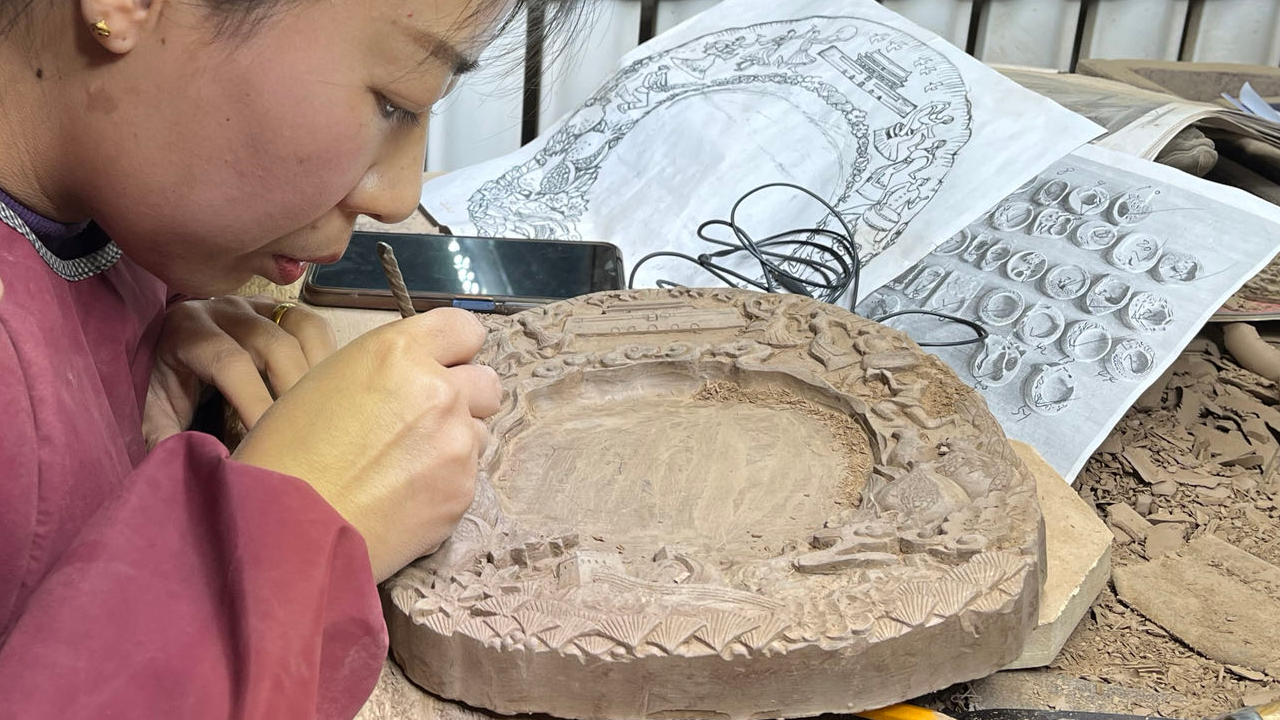
A photo taken on November 15, 2023 shows a woman carving a Chengni inkstone in Xinjiang County of Yuncheng, north China's Shanxi Province. /CGTN
A photo taken on November 15, 2023 shows a woman carving a Chengni inkstone in Xinjiang County of Yuncheng, north China's Shanxi Province. /CGTN
Inkstones have long been a treasured stationery item in China and a research institute-cum-cultural park in the country's Shanxi Province is working tirelessly to preserve a unique type.
From literati of old to keen calligraphy enthusiasts of modern times, the inkstone is a common site on desks. They are not just receptacles for ink, they are works of art in themselves.
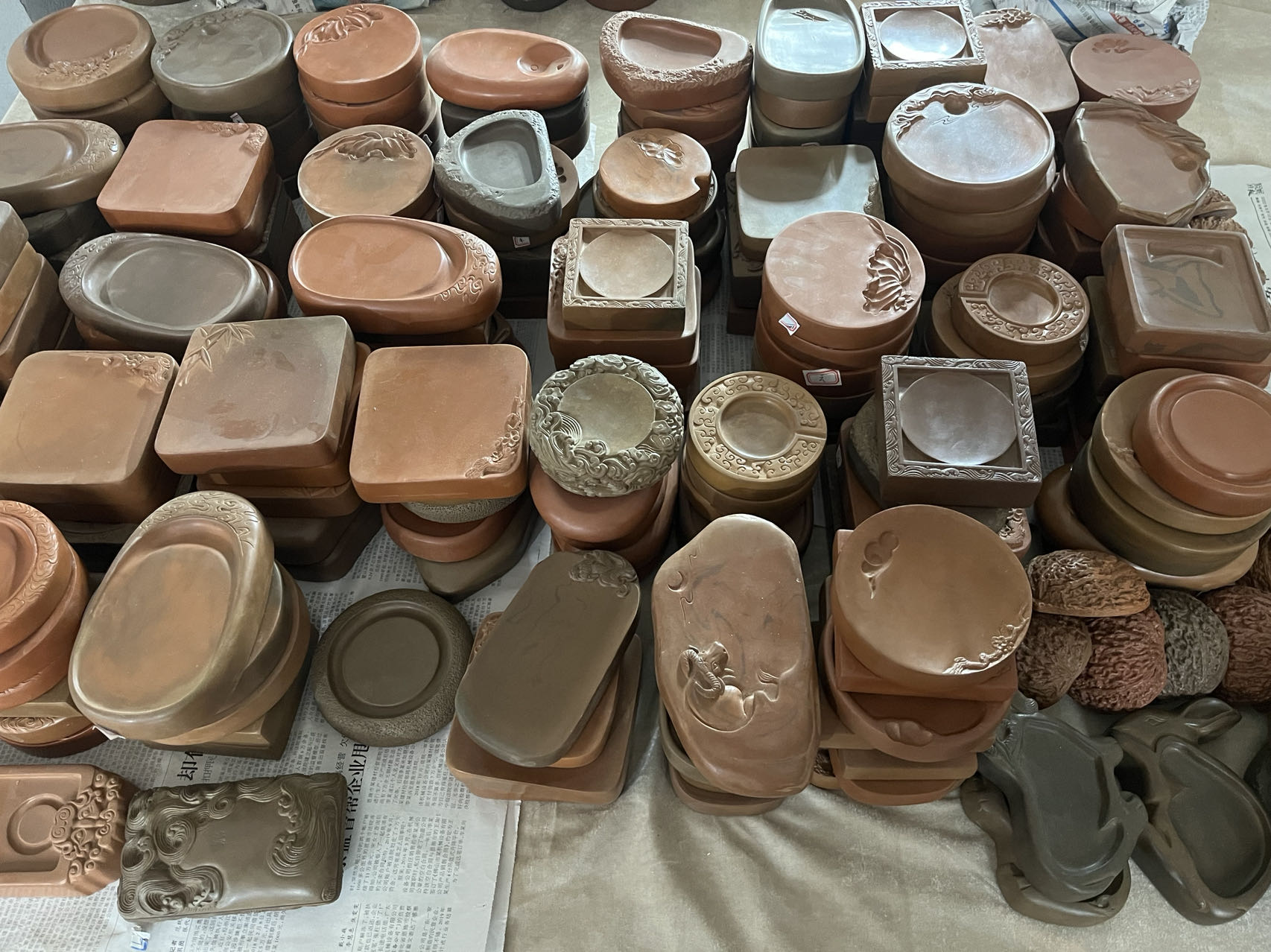
A photo taken on November 15, 2023 shows piles of Chengni inkstones at an institute in Xinjiang County of Yuncheng, north China's Shanxi Province. /CGTN
A photo taken on November 15, 2023 shows piles of Chengni inkstones at an institute in Xinjiang County of Yuncheng, north China's Shanxi Province. /CGTN
Located in Xinjiang County of Yuncheng, Shanxi, is the Jiangzhou Chengni Inkstone Research and Development Institute, a center that is dedicated to preserving the Chengni inkstone. It sits alongside China's three other types of inkstones – the She, the Duan and Tao inkstones – but stands out thanks to its material: river clay.
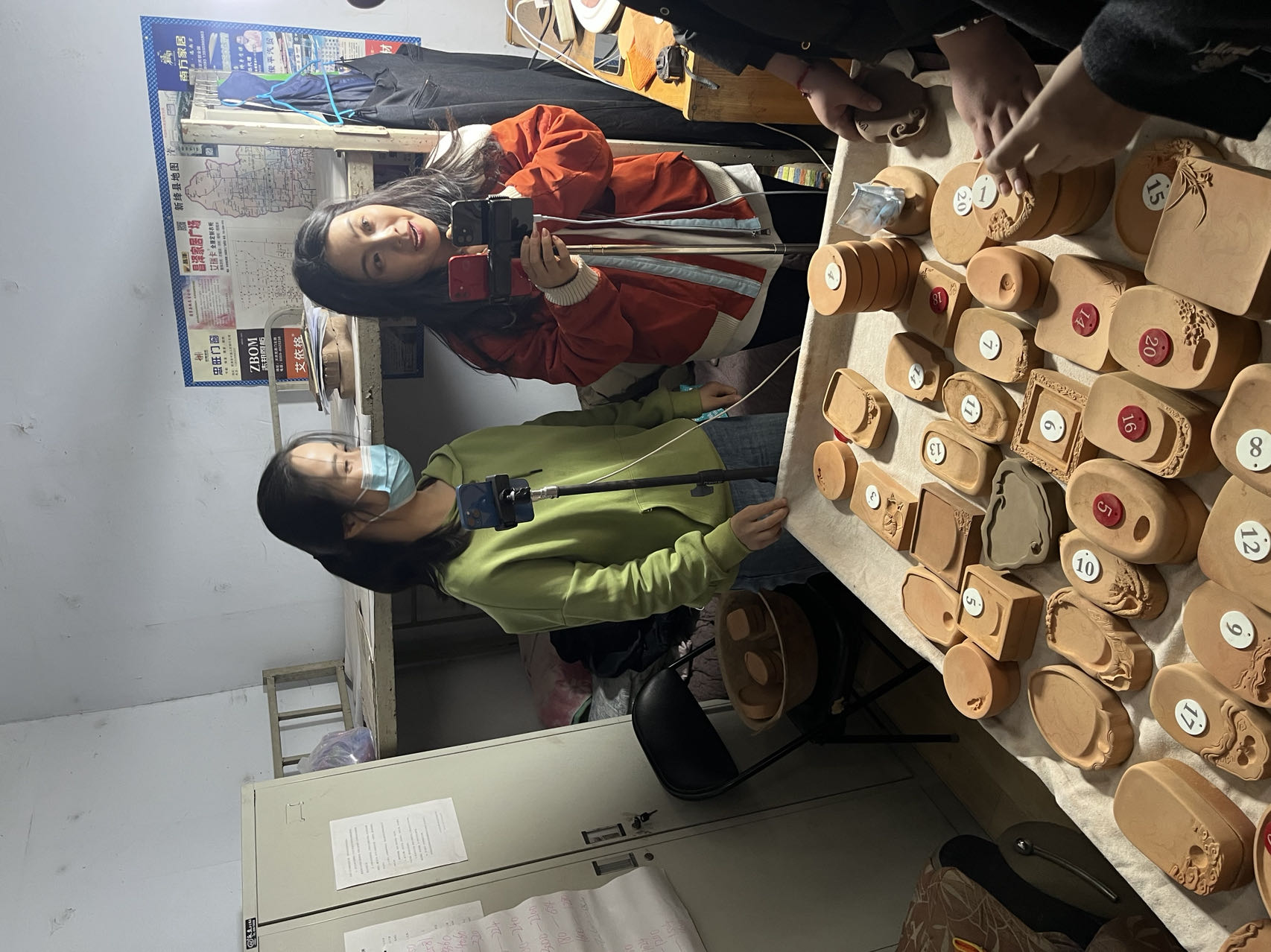
A photo taken on November 15, 2023 shows two women presenting a sales livestream from an institute in Xinjiang County of Yuncheng, north China's Shanxi Province. /CGTN
A photo taken on November 15, 2023 shows two women presenting a sales livestream from an institute in Xinjiang County of Yuncheng, north China's Shanxi Province. /CGTN
The institute is part of a broader cultural park accessible to tourists in the Yuncheng area. Here you will meet Lin Tao, a second-generation inheritor of Chengni inkstone producing skills. Lin guides customers and visitors through the center, walking them through the process that results in the inkstones, which are considered a cultural business card of Xinjiang, Yuncheng and even broader Shanxi.
Welcoming visitors to the center, he explains that the inkstones are made from clay collected from the nearby Fenhe River. He says the full production cycle takes 10 months – beginning with the sourcing of the clay and ending with the completed product.
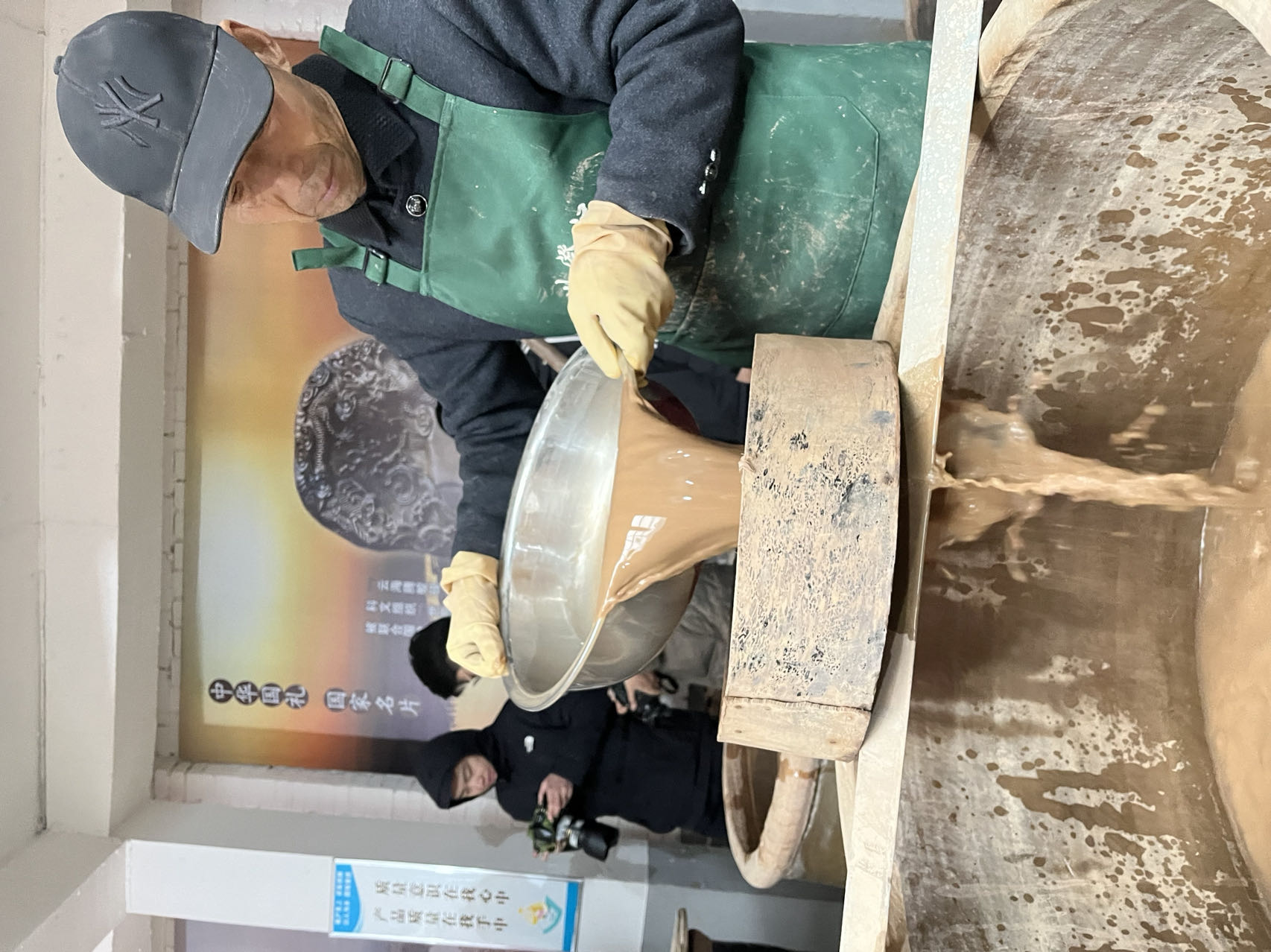
A photo taken on November 15, 2023 shows a man filtrating river clay at an institute in Xinjiang County of Yuncheng, north China's Shanxi Province. /CGTN
A photo taken on November 15, 2023 shows a man filtrating river clay at an institute in Xinjiang County of Yuncheng, north China's Shanxi Province. /CGTN
It is understood that this inkstone originated during the Tang Dynasty (618-907). Efforts by craftsmen in recent years helped to revive the art form after its popularity began to fade during the Qing Dynasty (1644-1911). More recently, in 2008, the production techniques of the Chengni inkstone were added to a national intangible cultural heritage protection list in China.

A photo taken on November 15, 2023 shows a worker carving a Chengni inkstone in Xinjiang County of Yuncheng, north China's Shanxi Province. /CGTN
A photo taken on November 15, 2023 shows a worker carving a Chengni inkstone in Xinjiang County of Yuncheng, north China's Shanxi Province. /CGTN
The process of making Chengni inkstones has nine steps: selecting the clay, filtrating, depositing, molding, baking, carving, firing, waxing and polishing. Many of these steps are demonstrated at the institute. One of the first processes you see is the filtration. Muddy water is stirred in large barrels and then poured through a type of sieve to collect the wet clay.
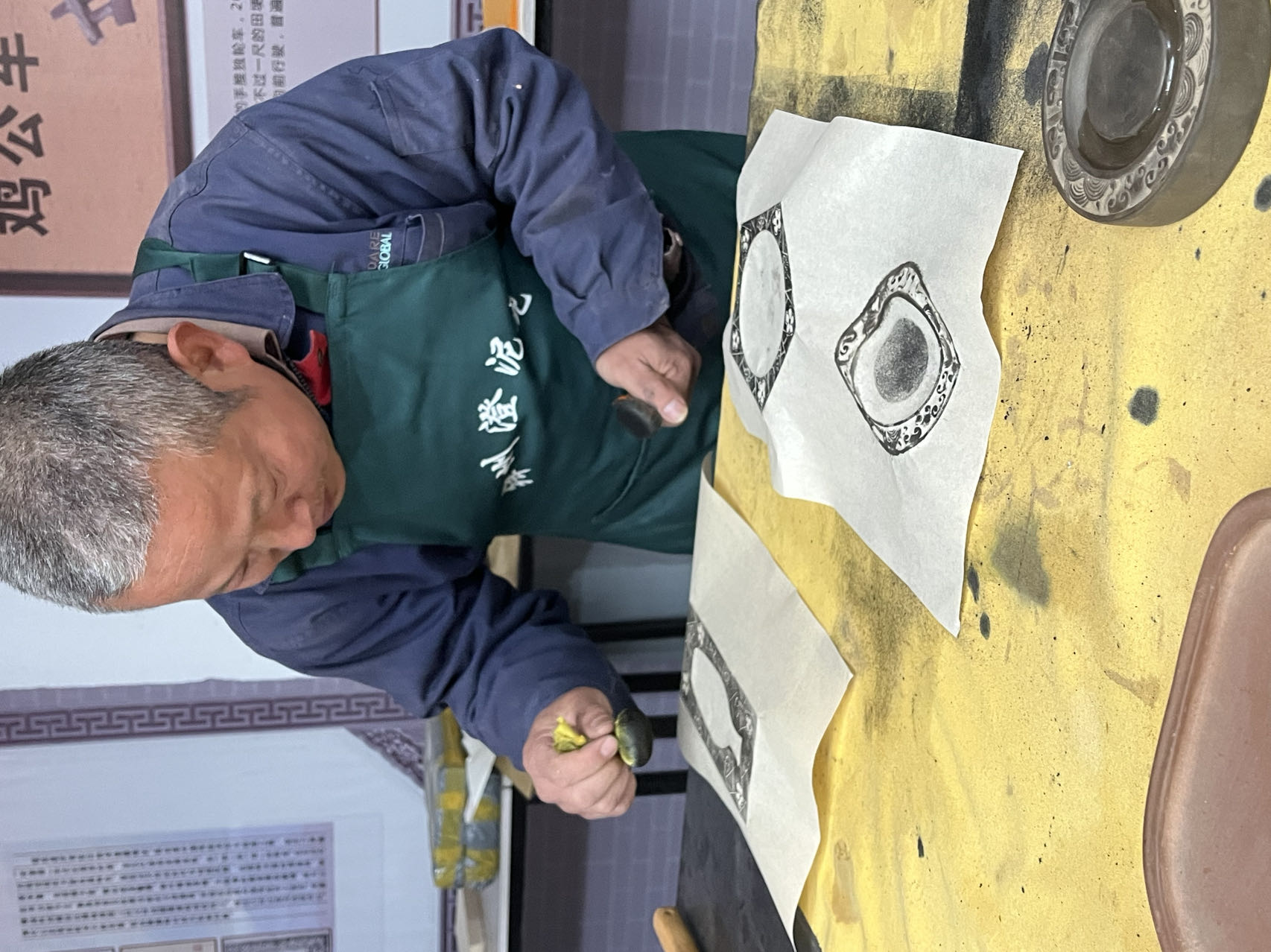
A photo taken on November 15, 2023 shows a man making ink prints in Xinjiang County of Yuncheng, north China's Shanxi Province. /CGTN
A photo taken on November 15, 2023 shows a man making ink prints in Xinjiang County of Yuncheng, north China's Shanxi Province. /CGTN
The wet clay is then rolled several times over into stump-shaped blocks. Lin Tao explains how the clay is patted 500 times to remove the bubbles.
As visitors file into the workshop, several craftsmen pore over the clay blocks, carving intricate designs. Tao described this as the most important part of the process of making Chengni inkstones. The carving leaves relief patterns in the clay blocks, which can later be used to contain ink and make ink impressions on paper and other printable surfaces. The inkstones are later fired in traditional kilns.
Neat piles of polished inkstones lie stacked up in the workshop and in the center's gift shop, displaying the end result of the craftsmen's work. They continue to pour, mold, carve and shape these timeless objects, creating masterpieces for writing desks throughout China and beyond.







